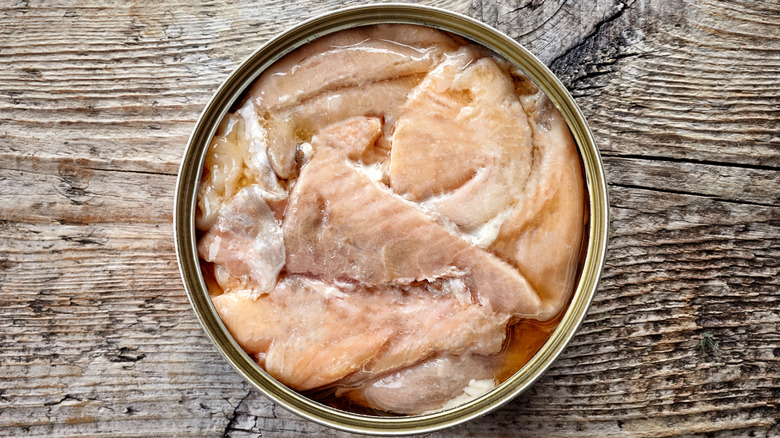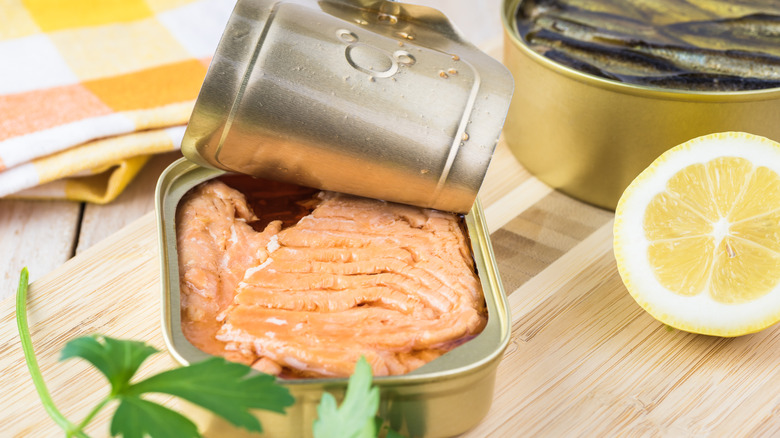Should You Be Concerned About Crystals Forming On Canned Salmon?
Over the past decade, Americans have been eating more seafood, and in recent years, the annual average consumption has been around 19 pounds per capita (via IntraFish). With increased awareness of the nutritional benefits of various food items, seafood is now recognized as essential to our diet and should be consumed regularly. According to SeafoodSource, for an adult, the USDA Dietary Guidelines recommends consuming two 4-ounce servings per week, amounting to 26 pounds of seafood every year. Salmon, in particular, has risen in the ranks and attained a distinguished status for its health benefits, especially as it is a rich source of protein and omega-3s, per BBC Good Food.
Canned salmon is a must-have pantry item since it is a quick and hassle-free way to enjoy its naturally delicious flavor. Eating it as a snack with crackers or putting it in a salad or casserole dish is quite convenient and can improve your cooking. While rare, some of us may have seen glass-like formations in our canned salmon and this, rightfully so, has led to some concern. But what are these little crystals and are they safe to consume?
Crystals on canned salmon are likely struvite
While crystal formations in canned salmon may look like glass shards, they are more likely a compound of magnesium ammonium phosphate — called struvite — that forms during the canning and thermal sterilization phases (via the Canadian Food Inspection Agency). The substance can also be spotted in other canned seafood items like tuna and mackerel.
Due to its appearance, struvite has raised fear among consumers. In fact, during WWI, a person discovered it in a tin of tuna and mistakenly thought someone from the enemy camp had put ground glass in the can (via the Department of Fisheries in Thailand). However, the USDA Food Safety and Inspection Service assures us that the crystals are not harmful at all, as they are comprised from components naturally found in the fish. These flavorless and colorless formations can be as small as a grain of sand or as large as a half-inch, per the Alaska Journal of Commerce.
If you still are uneasy upon finding these crystals, the Canadian Food Inspection Agency recommends placing them in warmed-up acidic liquids, such as vinegar or lemon juice. The formations will dissolve if they are indeed struvite. But if they do not break easily or disintegrate in acids, it is worth checking out if they could actually be glass.
So, if you find little crystals in your canned salmon, don't panic or run screaming to your grocery store. Keep in mind the science of struvite and eat away!

